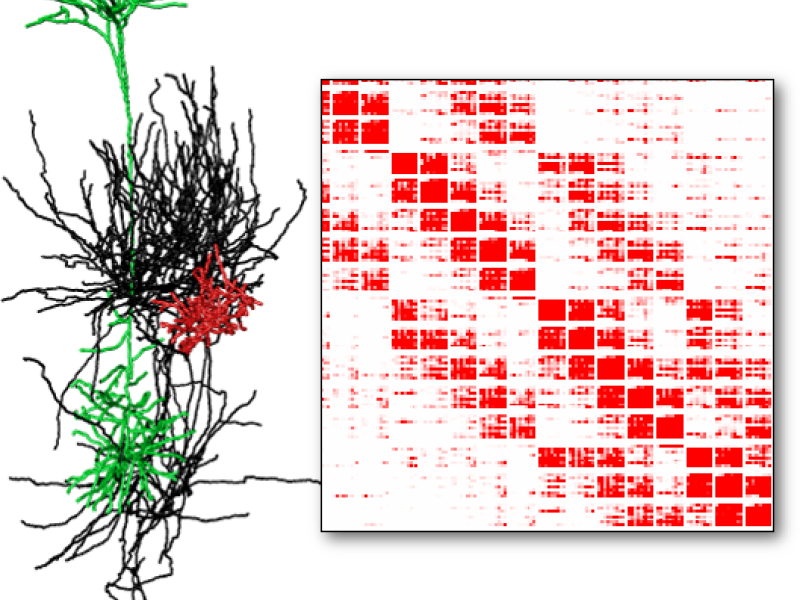The goal of the NeuroConnect project is
- to generate anatomically realistic 3D neural network models,
- to provide tools to analyze such models and
- to extract information for numerical simulations of neural activity, particularly the synaptic connectivity.
This requires the development of new methods to effectively specify, visualize, and quantify the information of interest in these potentially large (>500k neurons) and complex neural networks, as well as efficient data structures to represent and process this data. Methods to extract the anatomical data underlying the network model and the modeling approach have been developed in the past Cortex In Silico project.
